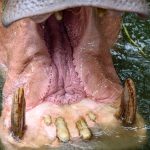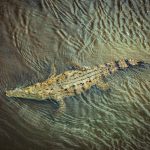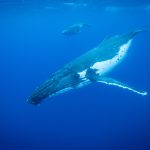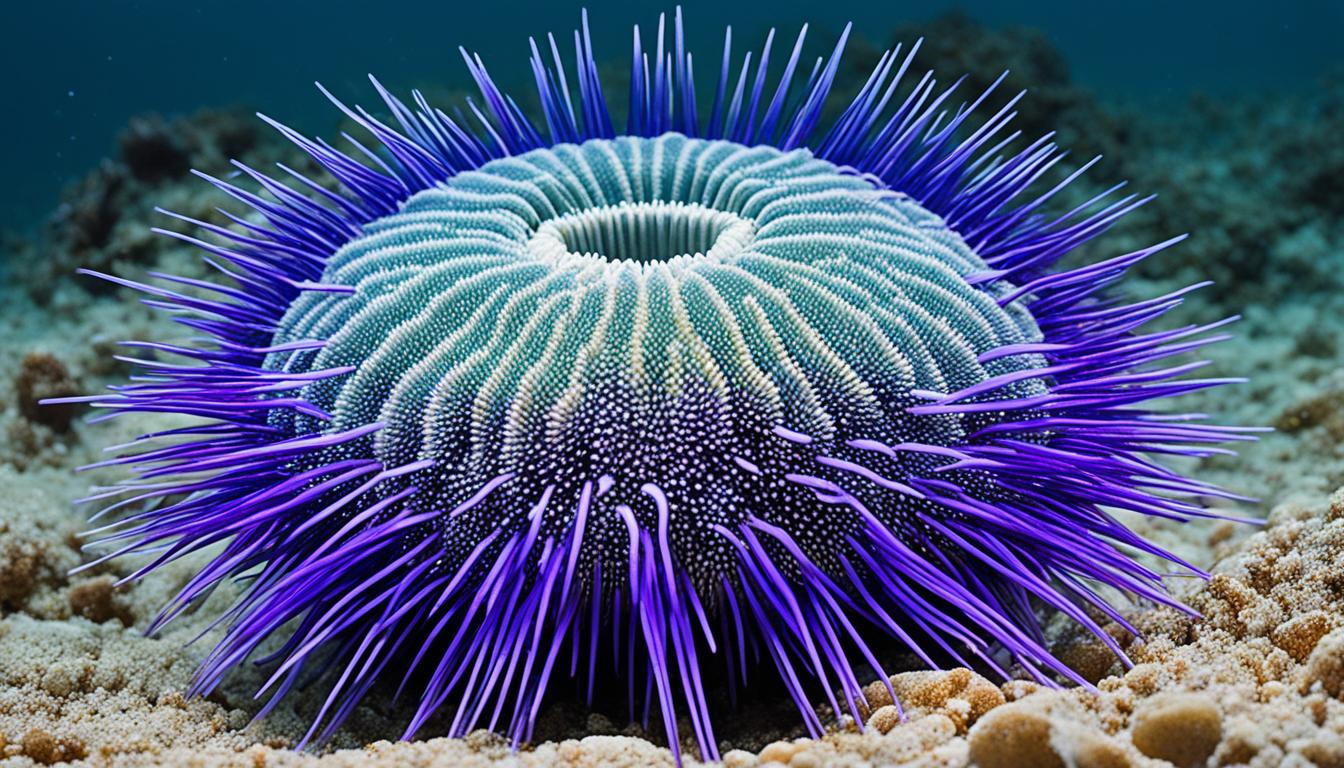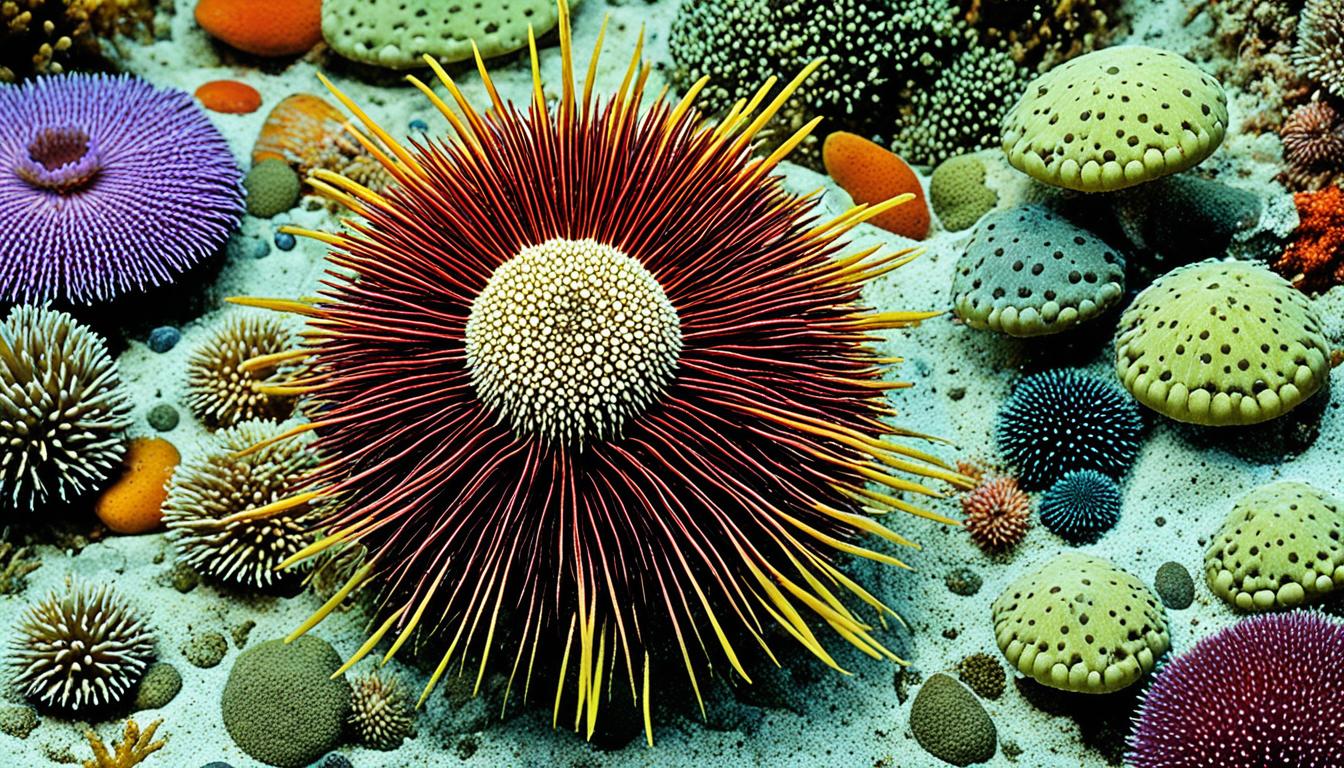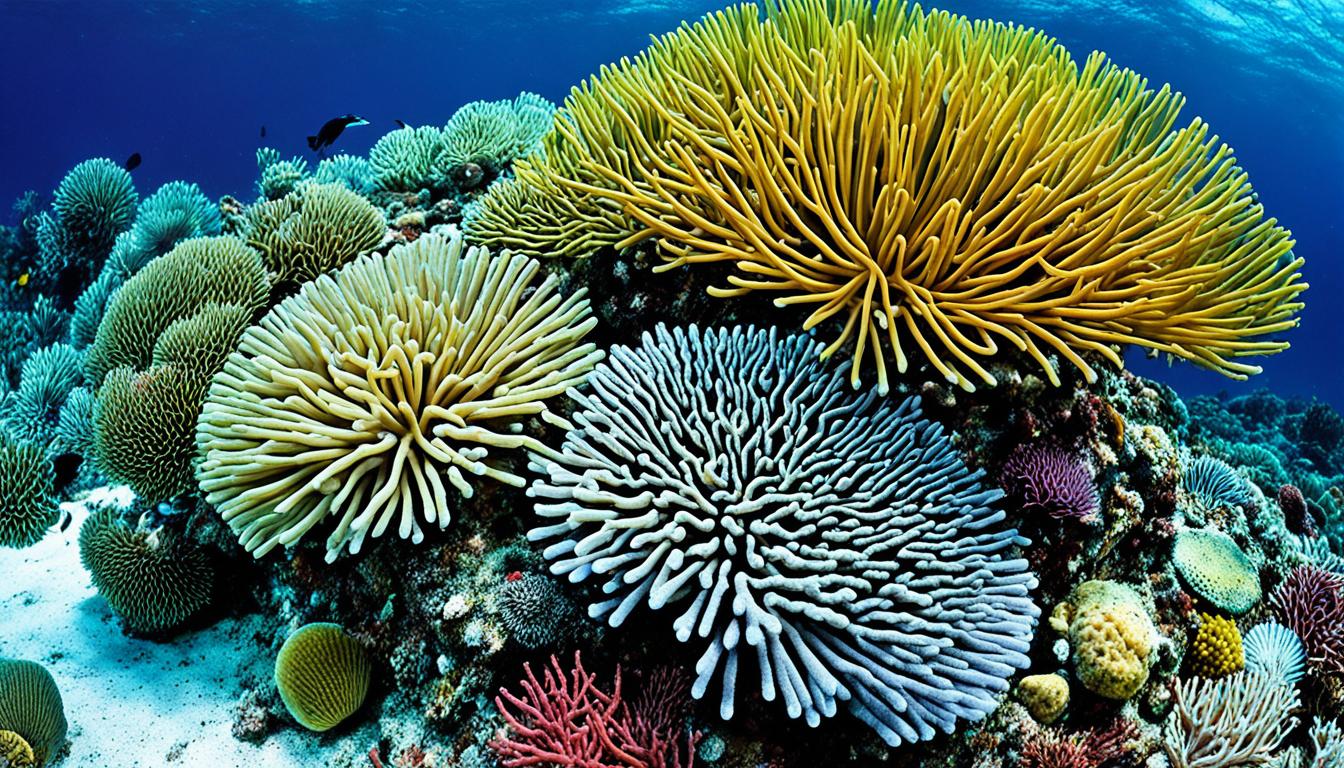Sea urchins are fascinating marine creatures with amazing survival skills. They belong to the class Echinoidea. These creatures use many ways to protect themselves from predators. This article will explore how sea urchins defend themselves, focusing on their special body parts and behaviors.
By looking into these defense strategies, you’ll learn more about their toughness and how they adapt to different ocean environments. Understanding sea urchin defense mechanisms shows their strength and ability to survive threats.
Introduction to Sea Urchins and Their Environment
Sea urchins are a fascinating group of marine creatures. They play a key role in the ocean. As echinoderms, they are part of the Echinodermata phylum, which also includes sea stars and sea cucumbers. They live in many places, from rocky shores to deep ocean depths, even in the hadal zone at 5,000 meters.
There are about 950 known species of sea urchins. They live in oceans all over the world. Their homes are crucial for finding food and hiding from predators. These creatures are important for the health of the ocean.
Learning about sea urchin habitats helps us understand their role in the ocean. They eat algae, which affects the balance of coral reefs and other marine areas. This shows how vital they are for the ocean’s health.
| Characteristic | Details |
|---|---|
| Phylum | Echinodermata |
| Species Count | Approximately 950 |
| Common Habitats | Rocky shores, coral reefs, hadal zones |
| Key Roles | Grazers of algae, prey for predators |
| Importance | Maintain marine ecosystem health |
Unique Features of Sea Urchin Anatomy
The anatomy of sea urchins is both fascinating and functional. At the heart of their structure is the sea urchin test. This is a strong outer shell made of ten fused plates of calcium carbonate. It not only supports the urchin but also protects it from predators.
Sea urchins have unique echinoderm features. They have a special symmetry that helps them stay stable in the water. They move around with the help of spines that can move and are covered in muscles and skin. These spines help them move and also protect them from danger.
Sea urchins have two kinds of spines: primary and secondary. Primary spines are long and help defend against predators. Secondary spines are shorter and help them move. This shows how well-designed sea urchin anatomy is, letting them live in different places and keep predators away.
Learning about these features helps us understand how sea urchins evolved in the ocean.
| Feature | Description |
|---|---|
| Sea Urchin Test | A hard outer shell made of ten fused calcium carbonate plates |
| Symmetry | Pentameric symmetry that provides stability |
| Primary Spines | Longer spines for defense against predators |
| Secondary Spines | Shorter spines aiding in locomotion |
How do sea urchins defend themselves?
Sea urchins have many ways to protect themselves. They use both physical and behavioral tactics to avoid predators and stay alive.
Role of Spines in Defense
The spines of sea urchins are their main defense. These spines are tough and sharp, making it hard for predators to get close. Some sea urchins even have venomous spines, which makes them even more protected.
When an attacker tries to remove a spine, it breaks off. This can cause more harm to the attacker. So, the spines not only protect the urchin but also act as a trap for predators.
Movement and Mobility as a Defensive Tactic
Sea urchins also move in ways that help them stay safe. They use their tube feet to move quickly over rocky areas. If a predator comes near, they can quickly move away or hide in sand and rubble.
This makes it hard for predators to find them. Sea urchins can also turn themselves right side up, which helps them escape danger.
Sea Urchin Predators and Their Threats
Sea urchins face many challenges in their underwater homes. Their main enemies are sea otters, triggerfish, and starfish. These predators use special ways to get to the urchins, even with their tough spines. This shows the ongoing fight between predators and prey.
Sea otters are key in keeping urchin numbers in check. They dive deep and can handle the urchins’ spines. Triggerfish and cod also threaten urchins, finding ways to get past their defenses.
Things like pollution and coastal development hurt urchins too. These human actions damage their homes. Overfishing also harms the sea life, including predators and urchins. This can lead to too many or too few urchins, making it hard for them to survive.
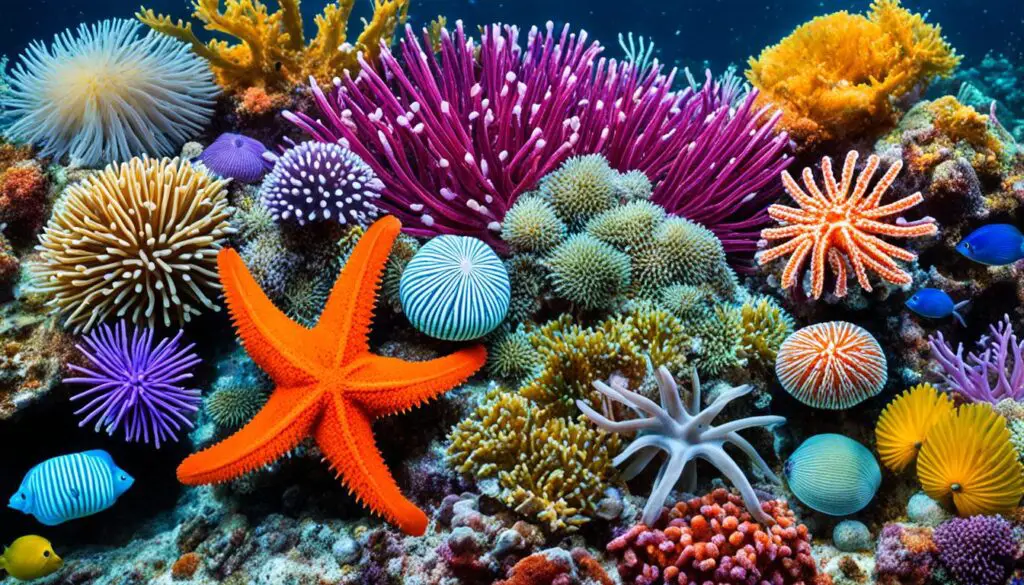
| Predator | Method of Prey Capture | Impact on Sea Urchin Population |
|---|---|---|
| Sea Otter | Dives to break spines | Significant reduction |
| Triggerfish | Use sharp teeth to crush | Moderate reduction |
| Starfish | Ejects stomach to digest externally | Potentially high reduction |
The fight between sea urchins and their predators is complex. It’s shaped by evolution and threats from the environment. We need to keep working to protect these creatures.
Camouflage and Behavioral Adaptations
In the underwater world, sea urchins use camouflage to survive. They blend in with their surroundings using sea urchin camouflage tactics. This helps them avoid predators.
Sea Urchin Camouflage Tactics
Sea urchins cleverly use debris from their environment for cover. This trick helps them hide from threats. They attach algae, shells, or small objects to their spines. This makes them look like part of their habitat.
Response to Shadows and Predators
Sea urchins have smart defensive behavior when they sense danger. If a shadow moves above them, they point their spines towards it. This sea urchin predator response gets them ready for an attack. It shows how well they can sense and react to threats.
| Camouflage Technique | Description | Effectiveness |
|---|---|---|
| Debris Covering | Utilization of natural debris to blend in with the ocean floor. | High |
| Shadow Detection | Quickly adjusting spine position in response to overhead threats. | Moderate to High |
| Shell Attachment | Attaching shells or algae for improved visual mimicry. | High |
Impact of Defense Mechanisms on Sea Urchin Survival
Sea urchins use many defense strategies to stay safe in the ocean. They have spiny armor, change color, and move in ways that help them avoid predators. These methods work together to make them less likely to be eaten, helping them survive in a tough environment.
It’s important to understand how these adaptations help sea urchins. They keep the ocean’s balance and are key to conservation efforts. But, they face threats like overfishing, damage to their homes, and climate change. Knowing how they defend themselves helps us see why we need to protect them.
Their defense strategies are crucial for their survival and ability to adapt. By supporting these natural ways of defending themselves, we can help the ocean and all its creatures. This includes sea urchins, which are fascinating and important to the ocean’s health.




